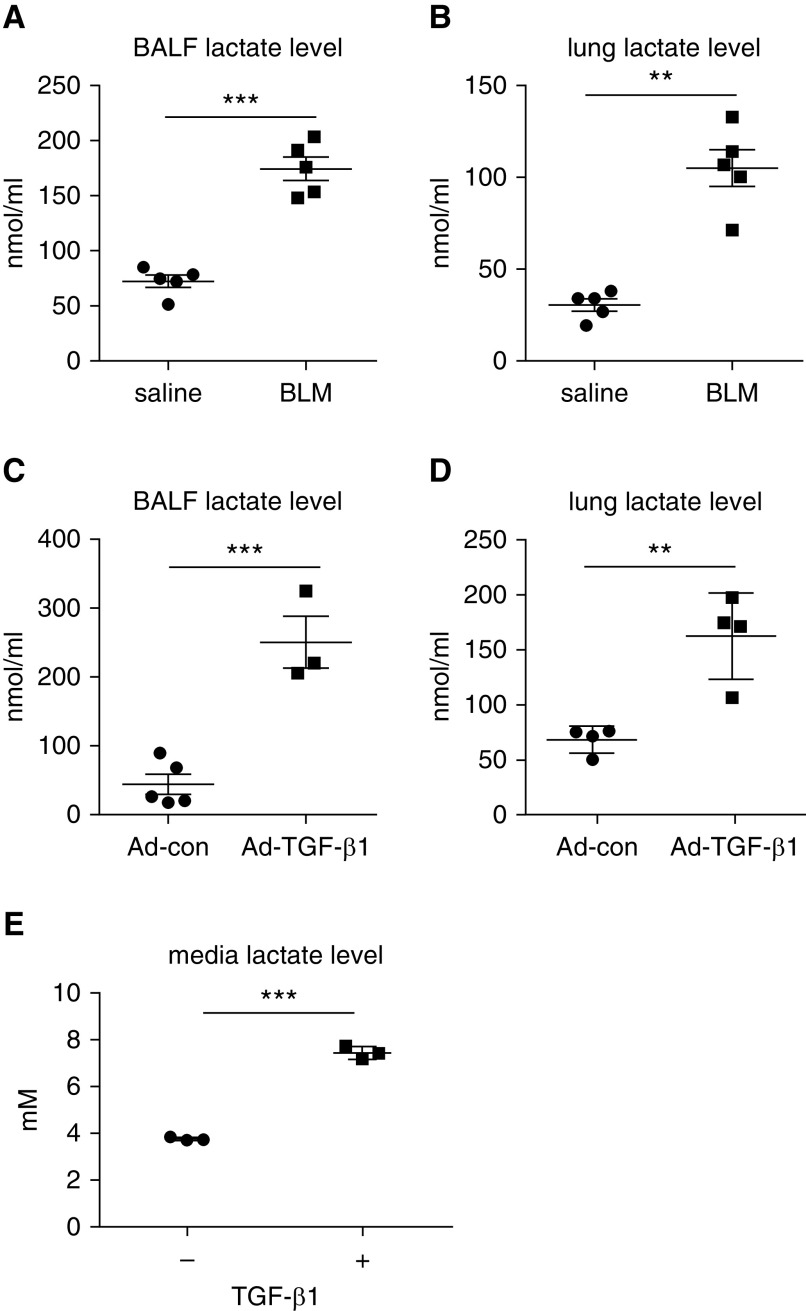Figure 1.
Increased glycolysis is characteristic of lung fibrosis. (A and B) Eight-week old C57BL/6 mice were i.t. instilled with saline or bleomycin (1.5 U/kg in 50 μl saline). Three weeks after treatment, mice were killed, and their BAL fluids (BALFs) and lungs were harvested. Lactate concentrations in the BALFs and lungs were determined (n = 5 mice for each group; mean ± SEM). **P < 0.01 and ***P < 0.001 by two-tailed Student’s t test. (C and D) C57BL/6 mice were i.t. instilled with control adenovirus or adenovirus expressing active TGF-β1 (transforming growth factor-β1) (1 × 1011 pfu/kg body weight). Two weeks after treatment, mice were killed, and lactate concentrations in the BALFs and lungs were determined (n = 3–5 mice for each group; mean ± SEM). **P < 0.01 and ***P < 0.001 by two-tailed Student’s t test. (E) Human lung fibroblast MRC5 cells were treated with or without TGF-β1 (2 ng/ml) for 48 hours. Lactate concentrations in the culture media were determined (n = 3; mean ± SD). ***P < 0.001 by two-tailed Student’s t test. Ad-con = control adenovirus; Ad-TGF-β1 = adenovirus expressing active TGF-β1; BLM = bleomycin; pfu = plaque-forming unit.

